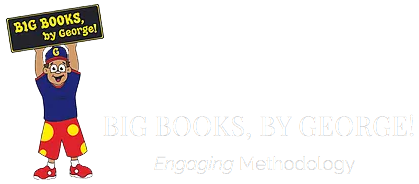Decoding the Essence of a Great Children's Book: 10 Vital Traits
Children’s books are more than just stories. They are gateways to learning, growth, and imagination for young minds. But what makes a children’s book truly outstanding? In this blog post, we will explore the 10 vital traits that separate good children’s books from truly great ones.
Engaging Storyline
First and foremost, a great children’s book must have an engaging storyline. It should capture the child’s interest from the first page and hold it until the very end. This does not necessarily mean that the plot has to be overly complex. Sometimes, simplicity can be just as effective. The key is to ensure that the story is told in a way that resonates with young readers. Big books in this category are not only enjoyable but also keep children coming back for more.
Relatable Characters
Characters in children’s books should be relatable and realistic. They need to reflect on the emotions, struggles, and joys that children experience. This helps young readers connect with the story on a deeper level. Big books excel in creating characters that children can see themselves in, fostering a sense of empathy and understanding.
Educational Value
Great children’s books often have an educational aspect. Whether it’s teaching moral values, facts about the world, or new words, these books can be powerful tools for learning. Big books don’t just tell a story; they also impart knowledge in a fun and engaging way.
Age-Appropriate Language
The language used in children’s books should be suitable for the age group it targets. Big books use language that is easy to understand yet challenging enough to help improve vocabulary and language skills. It’s all about striking the right balance.
Vibrant Illustrations
Illustrations play a crucial role in children’s books. They not only complement the text but also help in visual storytelling. Big books are known for their vibrant and engaging illustrations that captivate young readers and stimulate their imaginations. For more details visit us at https://www.bbbg.org/.
Cultural Diversity
Children’s books need to represent a diverse range of cultures and backgrounds. This exposure helps children understand and appreciate the diversity of the world around them. Big books in this genre promote inclusivity and multicultural understanding.
Emotional Depth
Great children’s books often tackle various emotions, helping children to understand and express their feelings. Whether it’s happiness, sadness, fear, or excitement, big books guide young readers through a spectrum of emotions, aiding their emotional development.
Interactive Elements
Interactive elements such as puzzles, questions, or activities can greatly enhance the reading experience. Big books often include these elements to keep young readers engaged and to stimulate their critical thinking skills.
Moral Lessons
Many great children’s books come with a moral lesson. These lessons are woven into the story in a way that is not preachy but rather subtle and thought-provoking. Big books are adept at teaching important life lessons in a manner that resonates with children.
Timelessness
Finally, the best children’s books are those that stand the test of time. They are the big books that are passed down from generation to generation, beloved by all who read them. Timelessness is the hallmark of a truly great children’s book.
Conclusion
In conclusion, great children’s books are a blend of engaging storytelling, relatable characters, educational value, age-appropriate language, vibrant illustrations, cultural diversity, emotional depth, interactive elements, moral lessons, and timelessness. These 10 traits are what make big books not just good, but exceptional. They are the books that capture hearts, spark imaginations, and leave a lasting impact on young minds. As we continue to explore and celebrate the world of children’s literature, let us cherish and promote the qualities that make these books a fundamental and delightful part of childhood.
Read More:
Big Books for Children
